Thanks to John E at Classic and Vintage BMW for this great post! Wow, John! Kudos!
M1 - (E26) 1978 to 1981

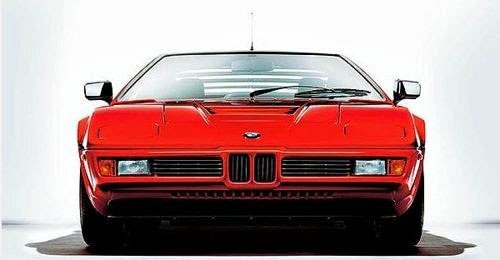
 When was the E26 M1 introduced?
When was the E26 M1 introduced?
The E26 M1 debuted at the 1978 Paris motor show.
 Why was the E26 M1 developed?
Why was the E26 M1 developed?
The E26 M1 was developed to 1) show that BMW Motorsport GmbH was a legitimate manufacturer of sports cars that could compete with Porsche and Ferrari on the street and 2) to offer a purpose-built machine that could participate competitively in the Group 4 and Group 5 racing series.
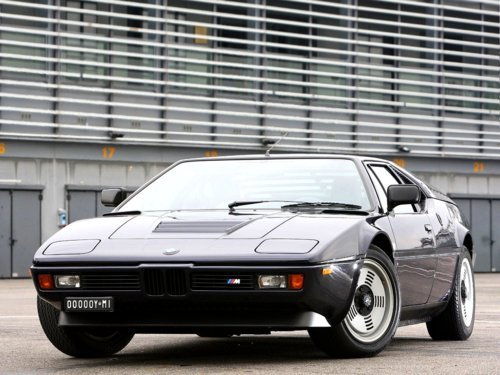

 How many examples of the E26 M1 were produced?
How many examples of the E26 M1 were produced?
There are many conflicting production numbers regarding the E26 M1. The official BMW production figures show that 453 examples were produced in a three-year period between July 1978 and July 1981. Of these, between 54 were competition versions, while the remaining 399 examples constitute the road-going street cars. It is thought that the final street-legal M1 (non-Procar) was produced in February 1981.
 Where was the E26 M1 produced?
Where was the E26 M1 produced?
The E26 M1 project was approved by BMW AG in 1976 under the condition that it would not interfere with the production of any other BMW model. BMW Motorsport initially contracted Lamborghini to assemble the cars with engines produced and shipped from Germany. However, severe financial troubles at Lamborghini forced BMW to terminate their agreement with the Italian supercar maker. Thus, the production examples of the E26 M1 were partially assembled at Ital Design in Turin using fiberglass bodywork supplied by T.I.R and tubular spaceframes supplied by Marchesi. Final assembly was then conducted at the Baur coachworks in Stuttgart, Germany. Each M1 was then given a final inspection at the BMW Motorsport facility in Munich before being delivered to its owner.
 What changes were made to the E26 M1 during its production?
What changes were made to the E26 M1 during its production?
There were no significant changes to the E26 M1 during the 32 months that it was produced.

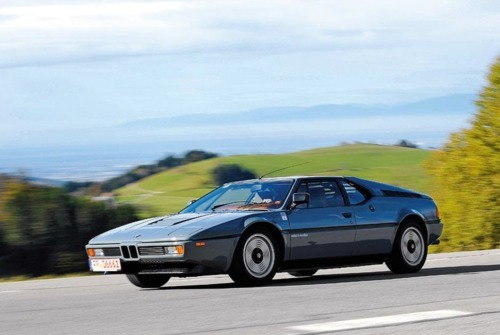

 How is the exterior of the E26 M1 unique?
How is the exterior of the E26 M1 unique?
The Giugiaro-designed bodywork of the E26 M1 is made of GRP (fiberglass) and shares no panels with any other BMW model.
 What items were optional on the E26 M1?
What items were optional on the E26 M1?
There were no factory options for the road version of the E26 M1.

M1 - (E26) 1978 to 1981

What makes the E26 M1 unique?
The E26 M1 is BMW’s only mid-engine production sports car and the only product of BMW Motorsport GmbH that is not based on an existing production model from BMW AG. It has a two-seat GRP body designed by Giorgetto Giugiaro and a 24-valve version of the production M30 inline-six derived from the unit used in the 3.0CSL competition cars known as the M88.
The E26 M1 is BMW’s only mid-engine production sports car and the only product of BMW Motorsport GmbH that is not based on an existing production model from BMW AG. It has a two-seat GRP body designed by Giorgetto Giugiaro and a 24-valve version of the production M30 inline-six derived from the unit used in the 3.0CSL competition cars known as the M88.

The E26 M1 debuted at the 1978 Paris motor show.
The E26 M1 was developed to 1) show that BMW Motorsport GmbH was a legitimate manufacturer of sports cars that could compete with Porsche and Ferrari on the street and 2) to offer a purpose-built machine that could participate competitively in the Group 4 and Group 5 racing series.
Why did the E26 M1 not compete in the Group 4 series?
Group 4 homologation requirements dictated that at least 400 examples of the street-legal version of each competition machine had to be produced within 24 months. Due to the difficulties in securing a subcontractor to produce the M1 and the subsequent delay that this caused, the M1 was not officially homologated until April 1, 1981. Because the Group 4 homologation took several years longer than anticipated, BMW created the Procar Series in which identical Group 4-spec M1 racers competed in the hands of established Formula 1 and Touring Car drivers as well as privateers.

Group 4 homologation requirements dictated that at least 400 examples of the street-legal version of each competition machine had to be produced within 24 months. Due to the difficulties in securing a subcontractor to produce the M1 and the subsequent delay that this caused, the M1 was not officially homologated until April 1, 1981. Because the Group 4 homologation took several years longer than anticipated, BMW created the Procar Series in which identical Group 4-spec M1 racers competed in the hands of established Formula 1 and Touring Car drivers as well as privateers.

Production Data 
How many versions of the E26 M1 were developed?
BMW Motorsport developed just one street-legal version of the E26 M1 in left-hand drive European specification. In addition, there were competition versions of the M1 built for Group 4 and Group 5, though the former were never homologated and subsequently became used in the M1 Procar series.
BMW Motorsport developed just one street-legal version of the E26 M1 in left-hand drive European specification. In addition, there were competition versions of the M1 built for Group 4 and Group 5, though the former were never homologated and subsequently became used in the M1 Procar series.
There are many conflicting production numbers regarding the E26 M1. The official BMW production figures show that 453 examples were produced in a three-year period between July 1978 and July 1981. Of these, between 54 were competition versions, while the remaining 399 examples constitute the road-going street cars. It is thought that the final street-legal M1 (non-Procar) was produced in February 1981.
The E26 M1 project was approved by BMW AG in 1976 under the condition that it would not interfere with the production of any other BMW model. BMW Motorsport initially contracted Lamborghini to assemble the cars with engines produced and shipped from Germany. However, severe financial troubles at Lamborghini forced BMW to terminate their agreement with the Italian supercar maker. Thus, the production examples of the E26 M1 were partially assembled at Ital Design in Turin using fiberglass bodywork supplied by T.I.R and tubular spaceframes supplied by Marchesi. Final assembly was then conducted at the Baur coachworks in Stuttgart, Germany. Each M1 was then given a final inspection at the BMW Motorsport facility in Munich before being delivered to its owner.
There were no significant changes to the E26 M1 during the 32 months that it was produced.

Drivetrain
How is the M88 engine unique?
The M88 engine that powers the E26 M1 is based on the 3,453-cc (via a bore of 93.4mm and stroke of 84mm) M30 inline-six that powered the contemporary BMW 6 Series and 7 Series models of the era. However, the M88 received a number of unique components including:
- A four-valve cylinder head derived from the 3.0CSL racing engines. The head is made of two pieces, the lower part comprising the combustion chamber and coolant chamber, while the upper portion contains the camshaft bearings and cup tappets.
- Individual throttle bodies for each cylinder. Measuring 46mm each, this is the first production engine from BMW Motorsport to utilize them.
- Kugelficsher mechanical fuel injection
- Magneti-Marelli electronic ignition
- Dry sump lubrication
Tuned for street use, the M88 engine produces 277 hp (204kW) at 6,500 rpm and 239 lb/ft of torque at 5,000 rpm. Racing versions produced 470 hp (350 kW) for Group 4 (normally-aspirated) and up to 850 hp (633 kW) for Group 5 (turbocharged). 
What kind of gearbox does the E26 M1 have?
The E26 M1 uses a ZF five-speed manual gearbox with a “dogleg” shift pattern and the following ratios: 2.42 (1), 1.61 (2), 1.14 (3), 0.846 (4), 0.704 (5). This is mated to a 4.22:1 rear axle with limited slip differential (40 percent locking).

The E26 M1 uses a ZF five-speed manual gearbox with a “dogleg” shift pattern and the following ratios: 2.42 (1), 1.61 (2), 1.14 (3), 0.846 (4), 0.704 (5). This is mated to a 4.22:1 rear axle with limited slip differential (40 percent locking).
Chassis
What kind of suspension does the E26 M1 utilize?
The E26 M1 utilizes essentially the same double-wishbone suspension configuration both front and rear. Designed by Gianpaolo Dallara at Lamborghini, it is comprised of MacPherson struts, height-adjustable Bilstein shocks and double unequal-legnth control arms. There is a 23mm anti-roll bar in the front and a 19mm anti-roll bar in the rear. The E26 M1 is equipped with non-assisted rack-and-pinion steering with 3.2 turns lock-to-lock.
The E26 M1 utilizes essentially the same double-wishbone suspension configuration both front and rear. Designed by Gianpaolo Dallara at Lamborghini, it is comprised of MacPherson struts, height-adjustable Bilstein shocks and double unequal-legnth control arms. There is a 23mm anti-roll bar in the front and a 19mm anti-roll bar in the rear. The E26 M1 is equipped with non-assisted rack-and-pinion steering with 3.2 turns lock-to-lock.
What size brakes does the E26 M1 have?
The E26 M1 is equipped with four-wheel vented disc brakes manufactured by ATE. The front rotors are 11.8-inches in diameter while the rear rotors measure 11.7-inches. ABS was not offered.
The E26 M1 is equipped with four-wheel vented disc brakes manufactured by ATE. The front rotors are 11.8-inches in diameter while the rear rotors measure 11.7-inches. ABS was not offered.
What size wheels and tires is the E26 M1 equipped with?
The E26 M1 was fitted exclusively with Pirelli P7 tires, sized 205/55VR16 in front and 225/50VR16 in the rear. The Campagnolo wheels contain BMW Motorsport center caps and are unique to the M1. They are sized 7x16-inch (front) and 8x16-inch (rear) .
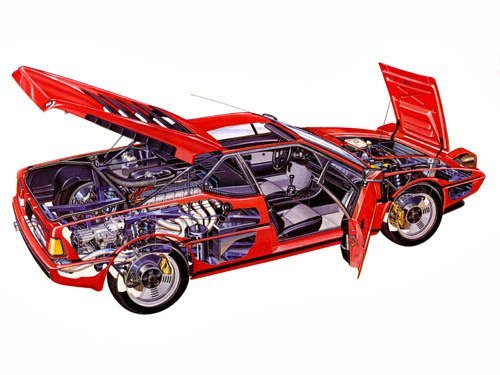

 Cosmetics
Cosmetics
The E26 M1 was fitted exclusively with Pirelli P7 tires, sized 205/55VR16 in front and 225/50VR16 in the rear. The Campagnolo wheels contain BMW Motorsport center caps and are unique to the M1. They are sized 7x16-inch (front) and 8x16-inch (rear) .

The Giugiaro-designed bodywork of the E26 M1 is made of GRP (fiberglass) and shares no panels with any other BMW model.
How is the interior of the E26 M1 unique?
Except for some minor switchgear carried over from the E21 3 Series and E24 6 Series, the interior of the E26 M1 is also largely unique. The seats are specific to the M1 and are manufactured by Recaro. The dashboard and seat bolsters are covered in leather, while the inner portion of the seats, door panels and headliner are covered in a textured cloth. The three-spoke, leather-wrapped steering wheel with early BMW Motorsport logo in the center was later shared with the E12 M535i.
Except for some minor switchgear carried over from the E21 3 Series and E24 6 Series, the interior of the E26 M1 is also largely unique. The seats are specific to the M1 and are manufactured by Recaro. The dashboard and seat bolsters are covered in leather, while the inner portion of the seats, door panels and headliner are covered in a textured cloth. The three-spoke, leather-wrapped steering wheel with early BMW Motorsport logo in the center was later shared with the E12 M535i.
What features were included on the E26 M1?
All M1 street cars were fitted as standard with air conditioning, power windows, power mirrors and a Becker radio/cassette audio system.
All M1 street cars were fitted as standard with air conditioning, power windows, power mirrors and a Becker radio/cassette audio system.
There were no factory options for the road version of the E26 M1.


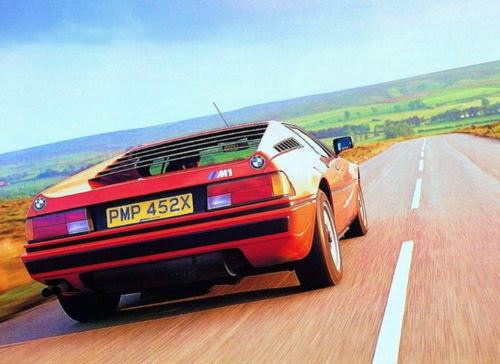
No comments:
Post a Comment